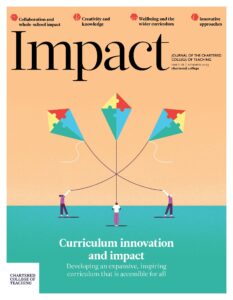Does setting in maths reduce student confidence?
Written by: Cordelia Myers

6 min read
CORDELIA MYERS CTEACH (LEADERSHIP), MATHS OUTREACH DIRECTOR, CAM ACADEMY TRUST, UK; STRATEGIC LEAD, CAMBRIDGE MATHS HUB, UK; TEACHER, CAMBOURNE VILLAGE COLLEGE, UK
What impact does setting in mathematics have on confidence levels in our Year 7 students? Are the effects more marked for disadvantaged students?
Introduction and rationale
The assertion that setting students contributes to widening the attainment gap (Sobel, 2018; Allen and Sims, 2018a) is thought-provoking for those of us who work in schools where setting in maths is standard practice. Education Endowment Foundation (EEF, 2021) research on setting tentatively points to a possible negative impact on the lower attainers.
Our school currently teaches maths in sets. The aim of this small research project was to assess the impact of setting in maths on our students through measuring levels of confidence. If the data pointed to marked low confidence in our disadvantaged students, and it was determined that this was large
Join us or sign in now to view the rest of this page
You're viewing this site as a guest, which only allows you to view a limited amount of content.
To view this page and get access to all our resources, join the Chartered College of Teaching (it's free for trainee teachers and half price for ECTs) or log in if you're already a member.
- Allen R and Sims S (2018a) The Teacher Gap. Abingdon: Routledge.
- Allen R and Sims S (2018b) How do shortages of maths teachers affect the within-school allocation of maths teachers to pupils? Nuffield Foundation. Available at: www.nuffieldfoundation.org/wp-content/uploads/2018/06/Within-school-allocations-of-maths-teachers-to-pupils_v_FINAL.pdf (accessed 20 March 2023).
- Education Endowment Foundation (EEF) (2021). Setting and streaming. Available at: https://educationendowmentfoundation.org.uk/education-evidence/teaching-learning-toolkit/setting-and-streaming (accessed 5 October 2022).
- Firth J (2022) Understanding the human mind – a foundation for self-regulated study. Impact 14: 6–9.
- Francis B, Connolly P, Archer L et al. (2017) Attainment grouping as self-fulfilling prophecy? A mixed methods exploration of self-confidence and set level among Year 7 students. International Journal of Educational Research 86: 96–108.
- Sobel D (2018) Narrowing the Attainment Gap. Bloomsbury: London.
- Trundley R, Wreghitt C, Edginton H et al. (2017) Supporting children to be active and influential participants in mathematics lessons through effective use of assigning competence and pre-teaching. Babcock LDP and Devon County Council. Available at: www.devon.gov.uk/support-schools-settings/school-effectiveness/teaching-and-learning/curriculum/mathematics/professional-development-and-research (accessed 20 March 2023).











Confidence is a qualitative value and can be very subjective from a respondent’s point of view. What of the quantitative outcome? How do streaming and setting affect outcomes? In Finland, for example, the practice of setting and streaming was abandoned some time ago. This link may be of some interest. https://www.aqi.org.uk/blogs/finland-going-against-the-global-trend/. May I also refer you to Finnish Lessons 3.0, Pasi Sahlberg, 2021 “Excellence with equity” – OECD.
What an interesting article, Simon. Thank you for the link. One of the things I found interesting in the research was how alike the two schools are in outcomes depite having different approaches. There are bigger issues here, I believe, than just setting and your link highlights that.